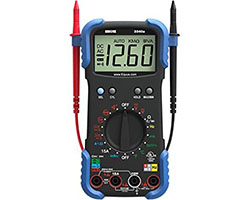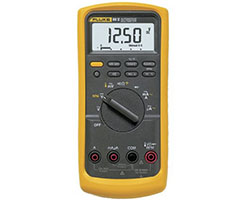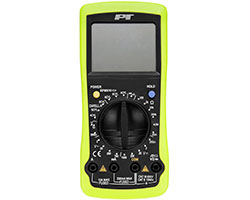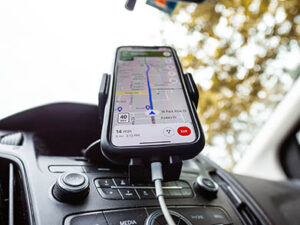Home \ Shop \ Car Electronics \ Automotive Multimeters
The Best Automotive Multimeters in 2025: How to choose and use them safely
Professional and amateur multimeters, which are made especially for automotive demands
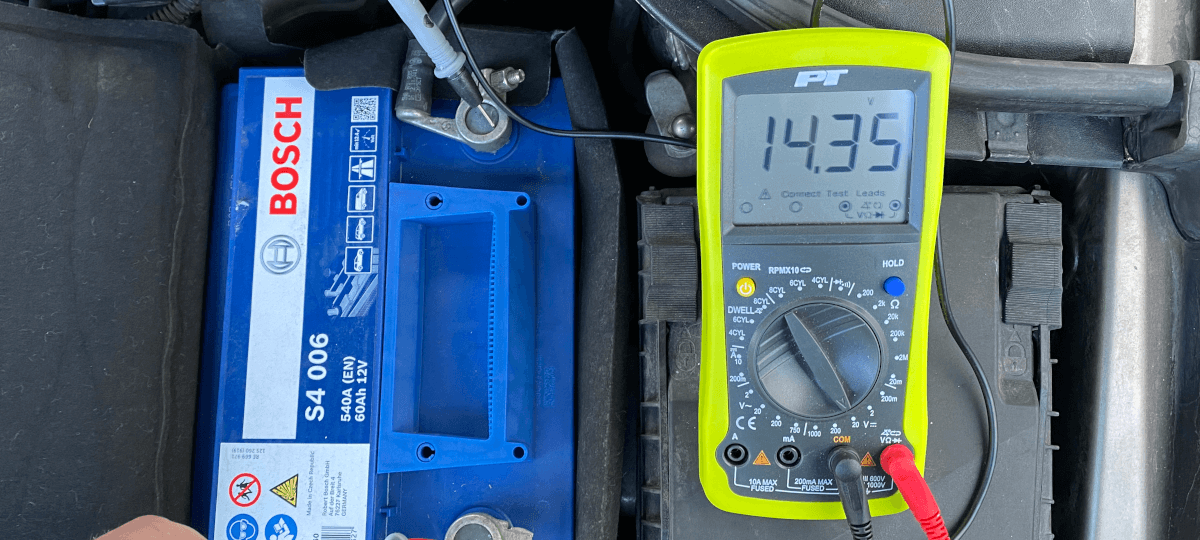
The Best Automotive Multimeters Review
The motor car’s electrical system has come a long way since the first motor vehicle with an internal combustion engine, a Benz Patent-Motorwagen built in 1885, was fitted with a trembler-coil spark ignition. Today it is not uncommon for the modern passenger car to be controlled by up to 100 electronic control units, connected by a wiring harness made up of over 1,500 copper wires, spanning more than 1,800 meters and weighing in excess of 55kG – a far cry even from the 55 wires and 50 meters of wiring that was found in the typical family car of the 1940’s.
And while this progress in electrical architecture delivers unquestionable benefits in performance and functionality, it brings with it an increased risk of electrical system breakdowns, which can be extremely difficult to diagnose – even for the skilled technician – without the correct equipment.
It is for this reason that professionals and DIY enthusiasts alike spend time and money on selecting the best tool for the job – the automotive multimeter. Also known as a multitester or VOM (volt-ohm-milliammeter), in the right hands this device is invaluable in accurate and timeous electric/ electronic fault-diagnosis.
- 1. The Best Automotive Multimeters Review
- 2. Innova 3340 Automotive Digital Multimeter
- 3. Fluke 88V (88-5) 1000V Automotive Multimeter
- 4. Performance Tool W2972 Automotive Multimeter
- 5. OTC 3980 750 Series Automotive Multimeter
- 6. ESI 585K Deluxe Digital Automotive Multimeter
- 7. AstroAI AM33D Digital Multimeter
- 8. When To Use An Automotive Multimeter
- 9. What To Consider To Buy The Best Automotive Multimeter
- 10. Safety Tips When Operating An Automotive Multitester
- 11. Can you check car fuses with a multimeter?
- 12. Can you damage a multimeter?
- 13. What's the difference between a voltmeter and a multimeter?
- 14. How many ohms is considered a short?
- 15. What does a reading of 0 ohms mean?
- 16. Do the best automotive multimeters have overload protection?

PROS
- High degree of accuracy in results
- Hands-free testing option
- Data hold provides stability so users can obtain test data without glitches
- The display is decent enough for precise observation
CONS
- Lack of backlit screen doesn’t support usage at night or in poor light
The Innova automotive multimeter is a device used to locate specific engine problems. A such, it can be used by people ranging across differing levels of technical expertise. This is quite significant because car owners can now get the opportunity to diagnose and troubleshoot engine problems before having to contact their mechanic or auto repair person, or maybe even before their mechanic or auto repair person can be available. This also helps car owners avoid further possible damage, often the case with continuous use of the engine while some parts are already damaged.
This product is the best on the market in general, in that it combines elements of high quality and affordability in one. Innova 3340, as well as other offerings in the range of multimeters by Innova, all provide 10 Mega Ohm Circuitry. The less technical meaning of this is that they do an excellent job of preventing damage to electronics. Users get the benefit of hands-free testing with this device. It has test leads and holders and also has an easy slip through strap that aids in this process. The product is UL listed for quality assurance and comes with instructions in one of three languages; English, Spanish, or French. The manufacturer has taken great pain to cater to the needs of the vast majority.
The product can be used in cars on circuits, fuses, wiring, and vehicle battery. Some more professional features include a temperature probe to measure temperature, an inductive clamp for measuring RPM, and it also comes with a storage pack.

PROS
- Lifetime warranty
- Tests are fast and accurate
- Excellent battery lifetime
- Screen resolution is excellent with backlight for night visibility
CONS
- It is quite expensive
- The device is quite big
This premium choice multimeter is more expensive than the others. It has loads of features that make it worth the price and some extra. The product naturally measures voltage, AC and DC, capacitance, resistance, and frequency. It also measures temperature with a built-in thermometer. There are manual range and auto range modes so that users can make their choice based on their tech knowledge. The maximum resistance of 50 megaohms and can measure voltage up to 1000V AC and DC. Apart from the quite exceptional temperature probe, this device can measure and give an accurate reading on temperature, ranging from -200°C to 1090°C. It can also withstand up to 8000 volts in hazardous spikes, should something go wrong.
The product weighs 3 pounds and won’t pose a problem to prolonged handheld usage. There are the minimum and maximum recording features for logging in pole values for future use. With the auto-hold feature, one can acquire stable reading with a single touch of the lead tips.

PROS
- Performs a lot of electrical tests and car trouble checks
- Includes a large LCD display that is easy to read in most cases
- Has the ability to measure DWELL and inboard tachometer
- Safe, thanks to an overload protection
CONS
- Minor complaints on incorrect measurement
- It does not beep
- It hasn't an independent storage bag
The Performance Tool W2972 is a classic automotive multimeter that allows you to perform a standard set of electrical tests. Its appearance and the arrangement of the main elements is classic. The large LCD screen is located at the very top. Under it are the power button and the “HOLD” button, which calls the function of holding the readings, and the central part is occupied by the switch for measuring modes. It moves smoothly and is clearly fixed in the necessary position. At the bottom, there are connectors for the measuring probes. The housing is made of durable plastic and is encased in a rubberized material case. Thanks to this device is not afraid of falls from a low height. It also protects against mechanical damage.
An important option of this model is the availability of a tachometer and the ability to determine the ignition timing angle. Modes for these measurements are set by the number of cylinders of the car. The engine crankshaft speed is measured by connecting a digital car multimeter to the vehicle’s ignition system (see also about the crankshaft position (CKP) sensor). The breaker angle is checked by measuring the length of time the breaker remains open when the camshaft is turned.
Circuit testing, diode testing and transistor testing are also implemented in this multimeter. Also, conveniently located on the right side is the readout hold function. In order to fix the measurement results for some time, it is necessary to use the button “HOLD”. Pressing it again deactivates the function.
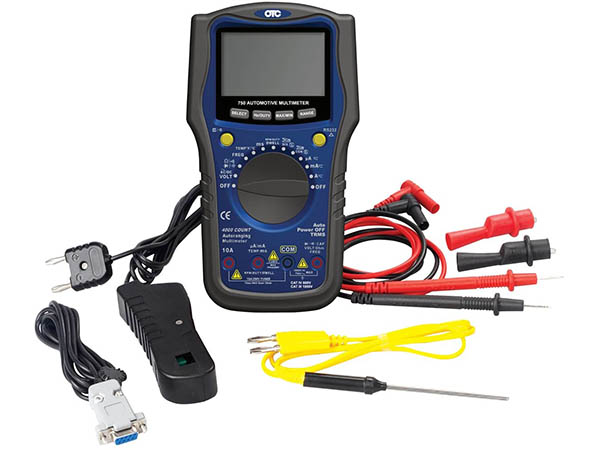
PROS
- Functions well even for hybrid cars
- The over-mold protects the meter from damage
- Users can save minimum and maximum readings for future use
CONS
- Refresh rate seems slow
- The meter is quite pricey
This device has a frequency duty cycle diode test enabled on it and other continuity tests. These are classified as higher cadre automotive tests, so it is nice to have them featured on an average product. Most other automotive-specific tests can also be carried out with this product, like temperature tests, pulse width tests, RPM dwell tests, and true RMS tests. OTC 3980 multimeter has a CAT III-1000V safety rating. Because of this, it is suitable even for hybrid cars. The big-screen display is backlight-enabled for visibility at night. The device can also hold a record of minimum and maximum readings for future reference. The product comes with a black case.
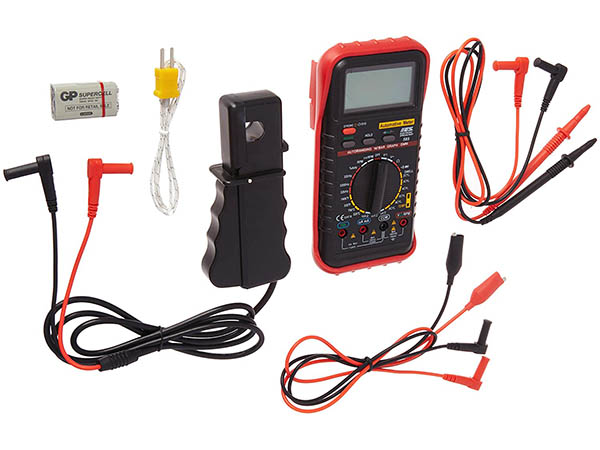
PROS
- It is very affordable
- Wide range of testing options
- Its impedance level and dual fuse system enables it to prevent damage to electronics excellently
CONS
- The display has no backlight for night vision
- The display is quite small
The ESI digital multimeter is a decent product for automotive use. It is cheap and has a high-quality rating. It has forty-five test ranges, fourteen test functions, and it operates a dual fuse system for better protection. Some of the tests that can be carried out using this multimeter include RPM for ignition systems, RPM pickup, and temperature probe. It has a 10 megaohms input impedance, and it comes with a built-in stand to aid with hands-free usage. This multimeter has two displays; an analog bar graph display and a digital display. Professionals who better appreciate old school analog display meters may find this hybrid appealing.

PROS
- Nice price for what it can give to customer
- Magnetic hanger aids hands-free usage
- It has a big screen
- Protective rubber corner guards prevent damage when device drops
CONS
- It cannot test alternating current (AC)
- The size is quite big
- Intermittent beeps from the device are little bit inconvenient for the ears
This device still packs some unique features for its price range and can be used by a decent amount of people. Apart from the usual measurement of electric and electronic data, this product can also troubleshoot electrical and electronic problems; automotive and household. The device has a data hold feature, so users can conveniently take stable measurements even with a single touch of the probes. They can see those readings even at night, thanks to the backlit LCD.
The kickstand on the device enables users to operate the multimeter hands-free, and the rubber corner guards prevent the device from damage in case it drops. It is worthy of note that this multimeter can’t test alternating current, despite its other capabilities. However, it comes with a year’s warranty. DIYers and beginner technicians can use AstroAI multimeter for household outlets, vehicle battery and charging systems, vehicle circuits, fuses, and general use batteries.
When To Use An Automotive Multimeter
As the name suggests this piece of equipment is, in its simplest form, actually three meters rolled into one: An ammeter, measuring current draw in amperes; a voltmeter that measures voltage and an ohmmeter to measure resistance.
Because of this versatility, the multimeter has a wide range of uses, including:
- Validating continuity – This is most frequently done by measuring resistance, as would be the case when verifying a good earth connection, which should typically return a reading of less than five ohms.
- Determining the potential energy available in an electrical storage device – For a car battery, this is done by measuring the voltage at rest with the engine off and all electrical systems switched off. While there may be parasitic losses due to “always-on” systems, such as telematics and security, drawing current, the voltage should read approximately 12.6V at 25o Celsius.
- Measure parasitic losses when a battery suffers an unusual discharge while the vehicle is parked – A battery that regularly goes ‘flat’ while the vehicle is parked for a period of time could either be as a result of the battery reaching the end of its service life and no longer capable of holding a charge; or it could be due to a dome light staying on, a sticky glove compartment switch, or even a radio drawing current. To determine which, the multimeter can be used to pinpoint any abnormal drain: While it is common to register a static current draw in the region of 25mA (milliamps) – 100mA or more would indicate a problem, requiring further investigation.
What To Consider To Buy The Best Automotive Multimeter
The very first decision any prospective buyer will face is to choose between an analog and a digital multimeter:
1. Analog multimeters use a d’Arsonval meter to measure voltage, current and resistance, and display the results using a mechanical pointer to register readings on a printed linear or nonlinear background. Being, primarily, an electro-mechanical device the analog meter is relatively small, and shows incremental variations in the readings in real time. However, these devices generally require the user to select the correct scale of display, usually through rotating a dial.
2. Digital multimeters, on the other hand, use an analog to digital converter to display readings on an LCD screen. These meters are further subdivided into auto-ranging and scalable devices. The primary differences between these being:
- The auto-ranging digital meter is easy to operate as the user does not have to select the operating range.
- In contrast, the scalable digital multimeter requires the user to select a scale appropriate for the range to be measured – failure to do so could result in inaccurate readings or even damage the meter.

Once this basic architecture of the automotive multitester has been decided upon, the buyer needs to weigh up which device best meets their needs.
While all multimeters will be capable of measuring voltage, resistance and current, it is important for the consumer to study each device’s features to ensure that the equipment best serves the purpose for which it is intended.
Features to look out for in devices best suited to automotive fault finding, include:
1. Appropriate voltage range – it is important that the meter is capable of covering typical automotive voltages of 12- and 24-volts and, if possible, even down to 1,5V for testing some accessory devices.
2. High input impedance – this should be as high as possible, preferably at least 10MΩ, so that the meter construction doesn’t influence the readings. This is well illustrated by the INNOVA 3340 Automotive Digital Multimeter (10 MegOhm) which is one of the best all-round automotive multimeters that also includes auto-ranging, auto shut-off and over-load protection.
3. True-RMS measurement capability – this enhances the meter’s ability to accurately establish an AC signal. A true-RMS (root mean square) device is capable of measuring both sinusoidal and non-sinusoidal waveforms generated by alternating current (ac) or ac voltage. The increase in components that generate non-sinusoidal waveforms has made this an increasingly important feature for diagnosing systems such as:
- Variable-speed motor drives
- Electronic ballasts
- Electronic Control Units
- HVAC
- Solid-state modules
4. An integrated temperature probe – this is a very handy feature in an automotive multimeter, as readings are often required at specific temperatures; such as when measuring battery voltage.
5. Audible continuity alerts – as described earlier, continuity can be tested by measuring resistance, but in hard-to-access areas often encountered when tracing problems in a car, a multimeter that emits a ‘beep’ while performing a continuity test can be a great help. Ideally, the meter would also default to zero for an open circuit.
6. Quality of the digital multimeter display screen – a good LCD display that is large, clear, easy to read, and backlit is important for automotive use where ambient light is often less than perfect. Some multimeters, such as the well-priced Performance Tool Multimeter (W2972) with Ohm Volt Amp and Diode Voltage Tester, can also capture/ freeze the screen while taking readings.
7. Meter accuracy – although accuracy is probably not essential for the DIY enthusiast, it is important to the professional technician as it is an indication of the margin of error a user can expect when taking a reading. It is normally expressed as a ‘±’ percentage, plus the offset of the ‘last significant number’ in the reading.
8. Meter resolution – once again this is a feature for the professional who regularly has to diagnose sensitive electronic equipment. Resolution is expressed in a value that indicates the smallest change in a signal that the meter can detect and display.
9. Shock-resistant casing – when working in the cramped spaces often encountered when testing automotive electrical systems in a vehicle, it is all too easy for the test equipment to be inadvertently dropped, destroying the meter. However, some manufacturers offer devices that are drop/ shock resistant to protect the sensitive circuitry of the meter.
See also: The 10 Best Bright HID Bulbs with Ballasts
This is by no means an exhaustive list of all features offered by manufacturers of the best automotive multimeters, but it does offer the prospective buyer an insight into what they should be looking for before deciding on a tester.
Although, most current automotive powernets are low voltage; Hybrid, Plugin Hybrid and full Battery Electric Vehicles that operate on up to 800V are beginning to make their appearance in the market, and although it is strongly recommended that any electrical trouble-shooting on these vehicles be left to the professionals, it is important that the user be made aware of safety as it pertains to operating an automotive multitester – not only personal safety but also safeguarding the equipment.
Safety Tips When Operating An Automotive Multitester
When it comes to personal safety it is important that the multitester has correctly been certified for the application.
There are several regulators, such as The IEC (the International Electrotechnical Commission) that set safety standards for multimeters. Make sure the product is certified by a third party verification lab such as the German safety monitoring agency, TUV; CE (for the European community); ETL Testing Laboratories, Inc. for US and Canada; the Canadian Standards Association (CSA) or the Underwriters Laboratories, Inc. (UL).
Safety certification is divided into four classifications, ranging from Category I that covers electronics and equipment protected to control spikes – which would mostly apply to automotive applications – through to Category IV such as attained by the premium-quality Fluke 88V 1000V Automotive Multimeter which is rated at up to 1000V under category III and 600V for category IV.
As with any other meter, the incorrect use of a multimeter can result in damage to the equipment or even personal injury, it is therefore important that the user follow some basic safety precautions when using a multimeter:
- Circuits should be deenergized and discharged completely before connecting or disconnecting the equipment.
- Verify that the multimeter is switched to AC before taking alternating current readings.
- Ensure the correct polarity when measuring DC.
- Never power-up a circuit while measuring resistance.
- Always begin a measurement with the highest voltage or current range setting.
- Select a scale-setting that allows a reading near the middle of the range.
- Connect the multimeter in series with the circuit for current measurements, and in parallel for voltage measurements.
- When finished working with the equipment, make sure it is switched off. If there is no ‘OFF’ position, select the highest AC voltage setting.
Given the sophistication of many of the best automotive multimeters, it is not uncommon for potential buyers to have questions and concerns not addressed by manufacturers of the equipment.
FAQ:
Can you check car fuses with a multimeter?
Yes. With the fuse removed, this can easily be achieved by setting the meter to the lowest resistance setting and taking a reading across the (glass) fuse caps or termination prongs. A very low resistance reading, indicates continuity and the fuse is working, while a high reading is a sure sign the fuse is blown.
Can you damage a multimeter?
Yes. An automotive multimeter is a very precise and sensitive piece of electronic equipment and is easily damaged if handled or operated negligently:
- Never drop the device.
- Always ensure the correct range is selected on analogue and scalable digital meters.
- Make sure AC or DC settings are correctly selected before taking a reading.
- Ensure the correct polarity when carrying out DC readings.
Additional operating tips can be found in the “Safety Tips When Operating An Automotive Multitester” section, above.
What's the difference between a voltmeter and a multimeter?
As discussed earlier in the guide – the multimeter is capable of measuring Volts, Amperes and Ohms – whereas a voltmeter only reads Volts.
How many ohms is considered a short?
While there is no absolute reading that constitutes a short circuit, the condition is most often associated with an unintentional path of low resistance.
For instance: If a 12V circuit has a 1A fuse then anything less than 12 ohms would be considered a short circuit. However, if protected by a 10A fuse then anything above 1.2 ohms would be safe.
What does a reading of 0 ohms mean?
This would be referred to as a “dead short” and potentially very damaging to any electrical circuit.
Do the best automotive multimeters have overload protection?
Most good quality instruments will indeed be protected against overload, although the type of protection will often depend on the operating voltage and price of the equipment: For instance, it is common to protect a multimeter against excessive voltage with a fuse.
Having read this guide to selecting and safely operating the best automotive multimeter, a user will be well on the way saving time and money in accurately diagnosing difficult to find electrical problems.
We do an efforts to find, research and recommend the best products. So, we may receive commissions from purchases that you make after following the links in our product reviews.
Related Products
-

Best Air Compressors For Home Garage Use in 2025 (Review)
-

Best Car Phone Mounts and Holders for Convenient Use in 2025
-

3 Best Shock Absorbers for Smooth and Precise Driving in 2025
-

Best Electric Vehicle Chargers For Home (TOP Products Review and Buyer’s Guide)
-

Best Windshield Wipers and Wiper Blades Shortlisted in 2025


